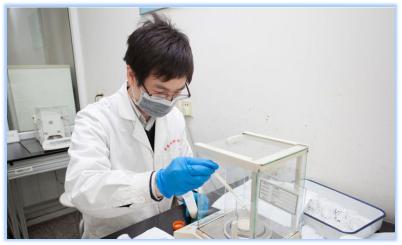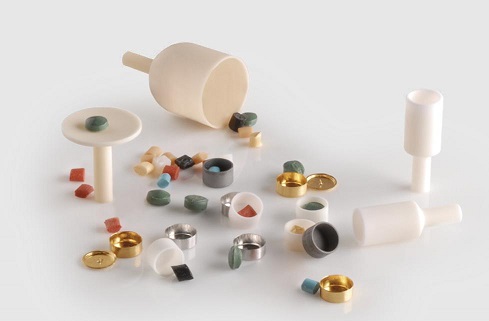Thermal analysis technology is a group of technologies to characterize the relationship between the properties of materials and temperature. It is widely used in qualitative and quantitative characterization of thermal, physical, mechanical and stability properties of materials, and has very important practical significance for the research and development of materials and quality control in production.At present, thermal analysis technology is increasingly becoming one of the indispensable and important means in the research, development and quality control of rubber materials.

Thermal analysis technology is a group of technologies to characterize the relationship between the properties of materials and temperature. It is widely used in qualitative and quantitative characterization of thermal, physical, mechanical and stability properties of materials, and has very important practical significance for the research and development of materials and quality control in production.Common thermal analysis methods include the following:
* DSC is a technique for measuring the change of heat flow of a sample with temperature or time at a programmed temperature.Therefore, by using this technique, the thermal effect of the Thermal analysis Sample pans on the sample, such as melting, solid-solid transition, chemical reaction, etc., can be studied.
* TGA is a technique for measuring the change of sample quality with temperature or time in a certain atmosphere using a TGA analysis crucibles. Using this technique, processes such as volatilization or degradation accompanied by quality change can be studied.If TGA - MS or TGA - FTIR combined technology is used, the emitted gas can also be analyzed to obtain more comprehensive and accurate information.
* TMA can measure the displacement change of the sample under certain stress.With DMA, the viscoelastic properties of the material can be studied in a wide frequency range, and the mechanical modulus and damping behavior of the material can be obtained.
At present, thermal analysis technology is increasingly becoming one of the indispensable and important means in the research, development and quality control of rubber materials.Thermal analysis technology can provide the following performance indexes for rubber materials:
DSC
TGA
TMA
DMA
Glass transition
Composition analysis
Thermal stability, oxidation stability, degradation
Viscoelastic energy, elastic modulus
Damping behavior
filler content, carbon black content
Evaporation, vaporization, adsorption, desorption
Softening temperature
Expansion, contraction, dissolution in solvent
Vulcanization
Melting, crystallizing
reaction enthalpies
Characterization of additives
This paper briefly introduces the possibility of application of different thermal analysis techniques in evaluating material properties from different angles.
Application introduction
TGA was used for composition analysis
TGA is often used for composition analysis. It can be used to observe and analyze the weight changes of samples in the DSC sample pans due to evaporation, pyrolysis, combustion, etc.The size of weightlessness step is directly related to the content of volatile components ( such as plasticizers, solvents, etc. ) and decomposition products.In the analysis of rubber, when the polymer is decomposed at high temperature, the atmosphere is changed from inert atmosphere to oxidizing atmosphere, the carbon black will burn and inorganic matter and ash will remain in the residue.For the mixture of polymers, if the decomposition temperature range of each component is different, TGA can be used to determine the content of each component.The following figure shows several elastomers containing natural rubber. The second polymer component is EPDM ( A ), BR ( B ) or SBR ( C ), respectively.From the weightlessness step of TGA curve, the content of each component can be clearly seen, including ( 1 ) volatile component, ( 2 ) natural rubber ( NR ), ( 3 ) corresponding second polymer component, and ( 4 ) carbon black.The residue is an inorganic compound.The results from the curve analysis are in good agreement with the theoretical values.
Identification of polymers by DSC
If the high temperature decomposition temperature of each component in the mixture of high polymers is similar, then when TGA is used for analysis, only the total polymer content can be obtained and the components cannot be separated.However, by DSC, the components can be distinguished according to their glass transition.The glass transition temperature TG indicates the type of polymer, while the height △ CP of the glass transition step reflects the content of polymer.For example, for NBR / Cr mixtures, the glass transition of Cr and NBR can be clearly separated.The ratio of step height is about 1: 1, which is quite consistent with the theoretical results of NBR with 24.4 % content and Cr with 24.4 % content in the equation.It can be seen from the result analysis that the result analysis for other elastomers is not very accurate because the second glass transition peak overlaps with the enthalpy relaxation peak or melting peak.
Mechanical performance analysis using DMA
DMA can provide us with macroscopic viscoelastic behavior and microscopic properties of materials.This can be explained by SBR with different vulcanization degrees below.During the glass transition process, the storage modulus g' decreased by about 3 orders of magnitude, while the loss modulus g' presented a peak.As the degree of vulcanization increases, the glass transition moves to a higher temperature.When the material is in the rubber state, g' depends on the degree of vulcanization.Due to viscous flow, the storage modulus g' of sb R1 with relatively low vulcanization degree decreases with the increase of temperature.When the crosslinking density is relatively high, g' increases linearly with temperature.Therefore, we can determine the cross-linking density of the material according to its modulus in the rubber state, and its cross-linking density k can be estimated according to equation k = g / ( 2rt rho ).Through calculation, the crosslinking density of SBR 3 is 1.07× 10 - 4 mol / g, and that of SBR 4 is 2.03× 10 - 4 mol / g ..The ratio of these two values is consistent with the ratio of sulfur content in the two materials.
The peak separation was carried out by TGA test under vacuum condition
Sometimes, the evaporation of plasticizer and the decomposition of polymer overlap each other.In this case, the TGA test under lower pressure ( vacuum ) can often lead to a better separation of the two processes, which of course correspondingly increases the accuracy of the result analysis.
In the following example, NR / SBR elastomer was tested at normal pressure and the content of volatile components was determined to be about 6.3 %.At a pressure of 10 mbar, we repeated this experiment and found that the content of volatile components was about 9.2 %, which was in good agreement with the actual content of 9.1 % oil in the components.
Using TMDSC to Increase Test Accuracy
More accurate results can be obtained by using temperature modulated DSC ( TMDSC ) technology.After using this technique, the relaxation effect of enthalpy and the influence of melting process on the measured heat capacity curve are obviously reduced.
The mixture of NR / SBR and EPDM / SBR was tested by TMDSC method. Through the analysis of the obtained curve, it can be seen that the ratio of △ CP is consistent with the actual value in the composition.
The ratio measured by DSC
The ratio measured by TMDSC
The actual value in the component
NBR/CR
1:0:1
1:0:1
NR/SBR
4:0:1
3:6:1
3:5:1
EPDM/SBR
1:3:1
2:0:1
2:0:1
Using DMA to Test Creep Performance
Using DMA test, the interaction between polymer and additive can be understood, and the range of linear relationship between stress and strain of material can be seen.
We tested the properties of EPDM elastomers with different carbon black additions in rubber state.The results showed that the storage modulus of EPDM not filled with carbon black was 0.5 MPa, and this value did not change with the change of displacement amplitude.However, with the increase of carbon black content, its modulus also increases.However, for a sample with the same carbon black content, the modulus decreases when the amplitude of shear displacement increases, so the relationship between stress and strain curve is nonlinear, which is caused by the reversible destruction of carbon black clusters.
Conclusion
Thermal analysis technology can provide very comprehensive and useful information for characterizing the properties of materials: for daily quality control and assurance, the control of individual quality technical indicators can be completed by selecting individual thermal analysis technology;However, the research and development of materials need to comprehensively use various thermal analysis techniques to conduct a comprehensive study and evaluation of the properties of materials.




 info@csceramic.com
info@csceramic.com








 +86 18273288522
+86 18273288522